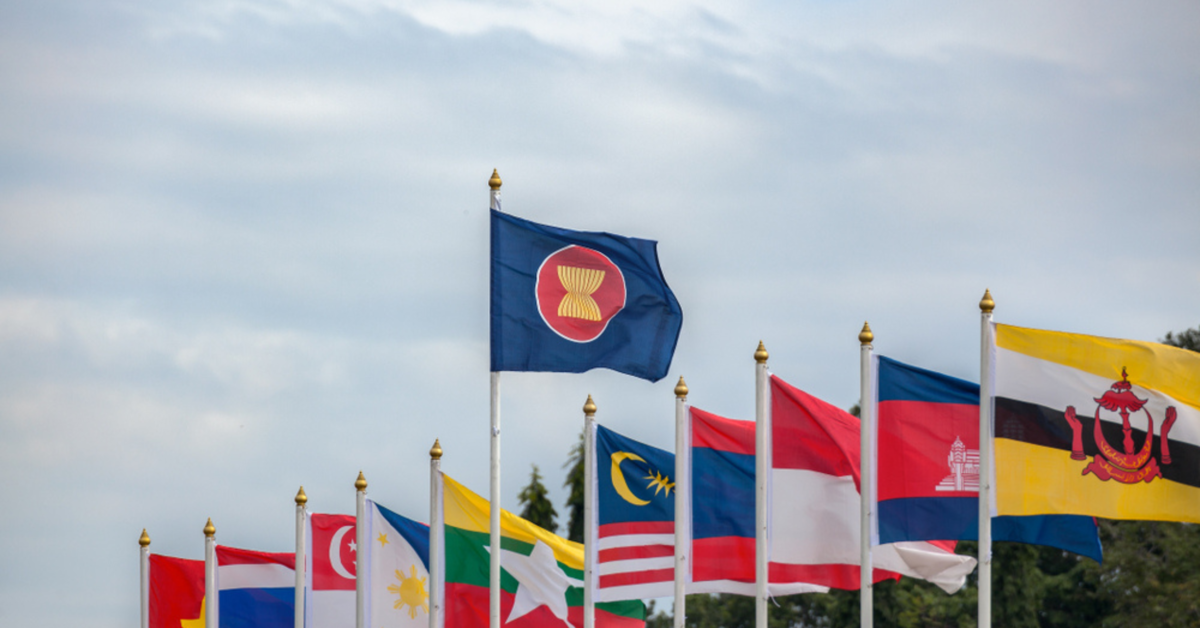The US-Vietnam Comprehensive Strategic Partnership: A Personal and Historical Perspective
Analysis by Joseph Damond, Global Chair, EGA Health
US President Biden’s recent visit to Hanoi resulted in the upgrade of US-Vietnam relations to a Comprehensive Strategic Partnership—placing the US on Vietnam’s highest diplomatic status alongside India, South Korea, China, and Russia. This step represents not just a significant elevation of US-Vietnam ties, but the historic culmination of a process that began 28 years ago when President Clinton decided to normalize diplomatic relations with Vietnam.
In 1995, I was an official at the Office of the United States Trade Representative (USTR) and named chief negotiator of the bilateral US-Vietnam trade agreement, a necessary step under US law to put Vietnam on equal trade footing with most other countries in the world. When I first visited Hanoi that December, I was among the first US trade officials to have visited the city in decades, beginning a five-year journey of agreeing to open our markets to each other that resulted in a signed trade agreement in 2000.
Notwithstanding the painful past, the US and Vietnam sides were both able to establish a respectful, candid, and practical working relationship, and fashion mutually beneficial solutions to difficult issues. We were also able to recognize common global interests and the ways that the Vietnam and US economies complemented each other. My Vietnamese counterpart and I were able to establish positions of trust and honesty while recognizing we both had national interests to protect.
In the almost three decades since we began the process of trade normalization, US-Vietnam trade has grown from roughly USD 1 million in 1995 to over USD 138 billion in 2022. Bilateral relations have strengthened alongside trade, and it is clear that the principles of mutual respect, candor and pragmatism have underlined that development. Indeed, the scope of the Comprehensive Strategic Partnership—spanning economic, political, security, science and technology, health, climate, energy, and human rights issues—was unthinkable just a decade or two ago.
Key highlights of the Comprehensive Strategic Partnership
In more specific terms, the elevated relationship calls for further deepening of political and diplomatic relations, as well as economic, trade, and investment cooperation to encourage inclusive economic growth. Some of the key highlights include:
- Greater cooperation in the semiconductors and minerals sector, strengthening critical US supply chains. Separately, at the Vietnam-US Innovation & Investment Summit, President Biden led a delegation of executives from top US and Vietnamese firms. Notable industry partnerships that emerged from this summit included artificial intelligence, battery storage systems, and chips.
- Pledges by both nations to cooperate on development science, technology, and digital innovation, such as training and development of a high-tech workforce, launch of an Open Radio Access Network (O-RAN training lab), and the establishment of 5G in Vietnam. Notably, the leaders announced the launch of semiconductor workforce development initiatives—supported by initial seed funding of USD 2 million from the US Government, in conjunction with future support from the Vietnamese Government and private sector.
- Global health security cooperation, including a willingness to strengthen cooperation to increase compatibility of pharmaceutical regulatory frameworks so that Vietnam can play an active role in regional and international medical supply chains.
- Mutual recognition of the criticality of partnership on the sustainability front. The US and Vietnam expressed their interest in coordinating in the Mekong and Red River Deltas, multi-sector adaptation to climate change, pollution reduction, voluntary technical assistance for modernized transmission infrastructure, renewable energy integration, climate market development, energy storage solutions, and improvement of the regulatory framework to enable a speedy and just energy transition. The US has also committed to assisting Vietnam with both finance and advanced climate technology to fulfill its international climate commitments.
- US recognition of Vietnam’s progress in significant market-based economic reforms, such as modernizing and enhancing the transparency of its monetary policy and exchange rate management framework. The US committed to expeditiously review Vietnam’s market economy country status, under US law, as it transitions to a market economy.
- Agreement to build on the burgeoning two-way trade. Both sides pledged to facilitate further market opening for each other’s goods and services, support trade and economic policy, and regulatory measures to achieve this aim. Both nations are also seeking to establish partnership in all four pillars of the Indo-Pacific Economic Framework for Prosperity (IPEF): Trade, Supply Chains, Clean Economy, and Fair Economy.
What it means for business
From a business standpoint, implications of the elevated relationship are positive:
- Support for US business: The fact that this partnership is initiated and led by the Vietnam Communist Party demonstrates a strong commitment at the highest level of governance in Vietnam. It highlights their recognition of the benefits and opportunities that closer ties with the US can offer, which should reassure US businesses of the commitment to fostering a conducive business environment. With this partnership in place, there will likely be increased enthusiasm and support from the Vietnamese Government for US businesses looking to expand or enter the Vietnamese market. This could manifest in various forms, such as streamlined regulatory processes, reduced trade barriers, and improved legal protections for US companies.
- Increased market expansion opportunities: The Joint Leaders’ Statement not only exhibits political will but also functions as the Action Plan for both countries to allocate and concentrate resources in particular areas. As the implications of this partnership are discussed among top leaders of all provinces and ministries in Vietnam, it is likely that various sectors and regions will actively engage in formulating strategies to align with the partnership's goals. US companies should keep a close eye on these discussions and look for potential areas of collaboration and investment. More broadly, given Vietnam's position within ASEAN, this partnership could potentially provide US companies with improved access not only to the Vietnamese market but also to the broader ASEAN region.
- Risk mitigation and stability: A strong partnership between Vietnam and the US can contribute to economic and political stability in the region. This stability is attractive to US businesses looking to operate in Vietnam as it reduces the risk of sudden disruptions and enhances predictability.
The importance of trust and trade
Many commentators have pointed to the common geopolitical aims that the US and Vietnam share in the Asia-Pacific region that have given rise to this comprehensive agreement. What many forget is that it was not achieved overnight. It has required a constant, ongoing effort over the past quarter century to build the trust and common understanding necessary for this achievement.
All the more remarkable is that this was achieved between two countries with such a fraught and tragic past. It demonstrates not only the determination and effort of a generation of American and Vietnamese officials, enterprises, and common individuals, it shows the value of openness to building up trust and trade.
Vietnam has been a great example of this posture, opening up to trade and reforming its economy over the past two decades—more than tripling its GDP in that time. As one example, EGA and I have worked closely with the Vietnamese Ministry of Health and other agencies recently to launch a national dialogue on how to globalize Vietnam’s biopharma sector. We have hosted joint conferences, released a recommendation-oriented white paper, and organized Vietnam’s delegation to the BIO Convention. And we were indeed pleased to see that the US and Vietnam agreed to build on these efforts in the Comprehensive Strategic Partnership agreement. After working on the Bilateral Trade Agreement almost three decades ago, and now with over two decades working on global biopharma issues, it is gratifying to see in the Comprehensive Strategic Partnership the tangible fruit of Vietnam’s openness to development and reform.
In Vietnam’s example we also find a valuable reminder—particularly for US political leaders who are becoming increasingly and worryingly inward looking—of what governments can achieve in the world with a consistent, generous, and outward looking vision.



